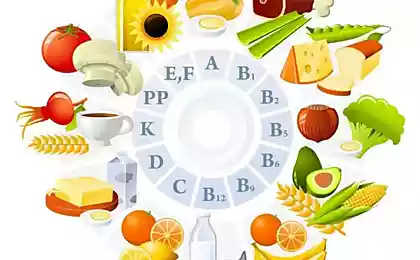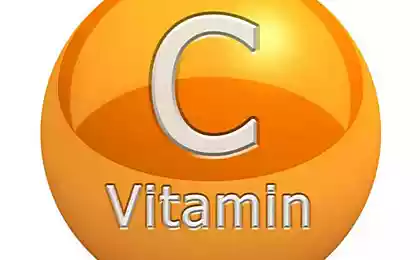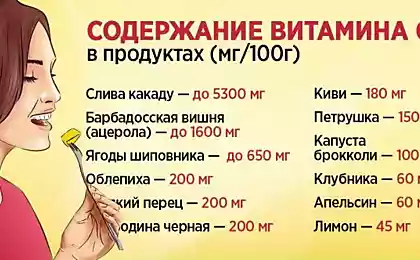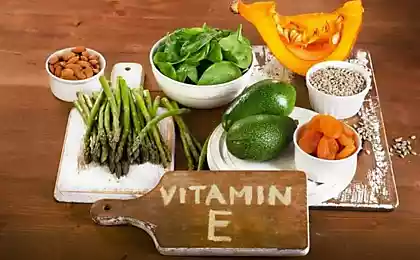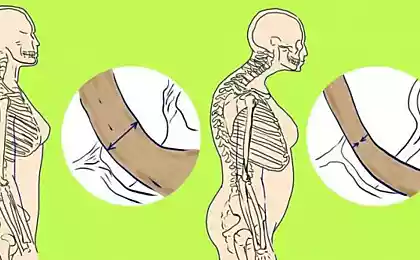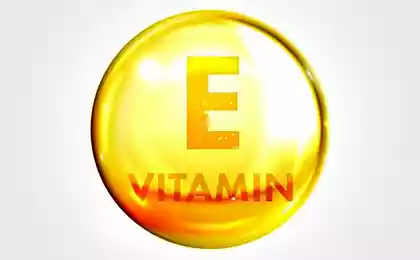756
How to replenish vitamin D in the winter

In the winter because the sun "diet" suffers the whole of our body, together with mood and immunity. And the most scarce of all the vitamin alphabet becomes vitamin D, as we almost completely derived from the sun. To replenish its reserves.
Why do we need vitamin D? Since the sun in our latitudes is almost does not spoil, in the area of scarce risk is part of almost every. It seems that vitamin D deficiency is not so dangerous. A few times a year flew to warmer climes, bonegilla somewhere near the equator – and health like as corrected. And if any shortage, you can always buy supplements that provide all kinds of vitamins and microelements. Actually it is not so simple.
Vitamin D calcium (Ca), phosphorus (P), vitamin a, magnesium and many other nutrients contained in food, are absorbed into the body through the small intestine. So its lack is reflected in the receipt of useful minerals. In addition, vitamin D regulates metabolic processes, is a stimulator of the synthesis of some hormones and cell growth, and a necessary component for proper growth of the skeleton, heart and blood clotting. Its deficiency causes rickets in children, osteoporosis in older people and joint pain.
Vitamin D acts as a regulator of nervous system activity. Today more and more often among people 20 to 40 years it is possible to meet cases of such diseases as multiple sclerosis. The cause of the disease is again the lack of "sun" vitamin, affecting the nervous system.
Vitamin D supports the immune system, affects the thyroid gland, helps lose weight and improves mood. It is no coincidence that in the winter when not much sun, we often fall into depression and apathy.
The need the Need for vitamin D depends on many factors: the General condition of the organism, age, occupation, the ratio of phosphorus salts and calcium in the diet. However, it is believed that the daily requirement for vitamin D for adults is 600 IU (international units). If we translate this rule in hours spent in the sun, it is enough 30 minutes in the period from 10.00 to 15.00. Stay longer and the sun is already fraught with consequences.
Keep in mind that if you eat a lot of cereals (cereals, muesli, bakery products), the more vitamin D you require.
How to replenish vitamin D in the winter? It is clear that the main source of vitamin D is the sun. But when it is little, it is necessary to look for alternatives. In the Soviet Union easily solved the problem of a lack of vitamin D and kids were sent to kindergartens, from time to time to take "sun baths" under a sun lamp. But the method has not justified itself – too easy to get burned by this lamp is the daily dose of vitamin.
Modern devices for sunbathing – tanning promise a perfect tan and, of course, requires enrichment with vitamin D. still, doctors do not cease to warn that tanning poses more harm and not benefit – accelerates the aging process of the skin and can provoke the development of malignant skin diseases. In any case, before going to the Solarium you should consult with your doctor.
In the winter if there is sun, try to take long walks, it would be nice to go skiing in the mountains. If this is not possible, then take calciferol.
And the production of vitamin D in the body contribute to air and water, contrast baths and massage. There is a kind of massage capillaries, and the body is enriched with vitamin D. And most importantly – in the winter it is very important to consume foods rich in vitamin D.
Top 5 natural sources of vitamin D

• Fish and seafood
Fatty fish are considered to be the absolute leaders in vitamin D. The nutrient is salmon. 100 grams of this fish will provide the daily requirement of vitamin D. Fresh mackerel, and necochea to cope with a daily deficit of 70-90%. It is also rich in valuable omega-3 and is much cheaper than many other salmonids.
• Dairy products
A quarter of the daily requirement of vitamin D ready to provide a glass of whole milk. During the processing of milk nutrients are not destroyed and transferred to dairy products. Especially pay attention to hard cheese varieties, sour cream and butter.
• Eggs
Eggs – not only the most popular and easy to do Breakfast, but still tasty and healthy. Scrambled eggs in the morning will provide 10% of the daily value of vitamin D contained in egg yolk. But this is assuming that the eggs and the hen that laid them, and ate synthetic food.
• Mushrooms
Vitamin D is produced in fungi under the action of sunlight. And its content varies depending on the method of their preparation: vitamins there are dried, and pickled mushrooms. Most vitamin are mushrooms with a dark hat. The number of useful elements depends on the variety of mushrooms, and stored for weeks refrigerated storage.
• Vegetable products
Parsley, horsetail, soybean, alfalfa, nettle. But the main source of industrial production of vitamin D yeast are.
Source: domashniy.ru/

